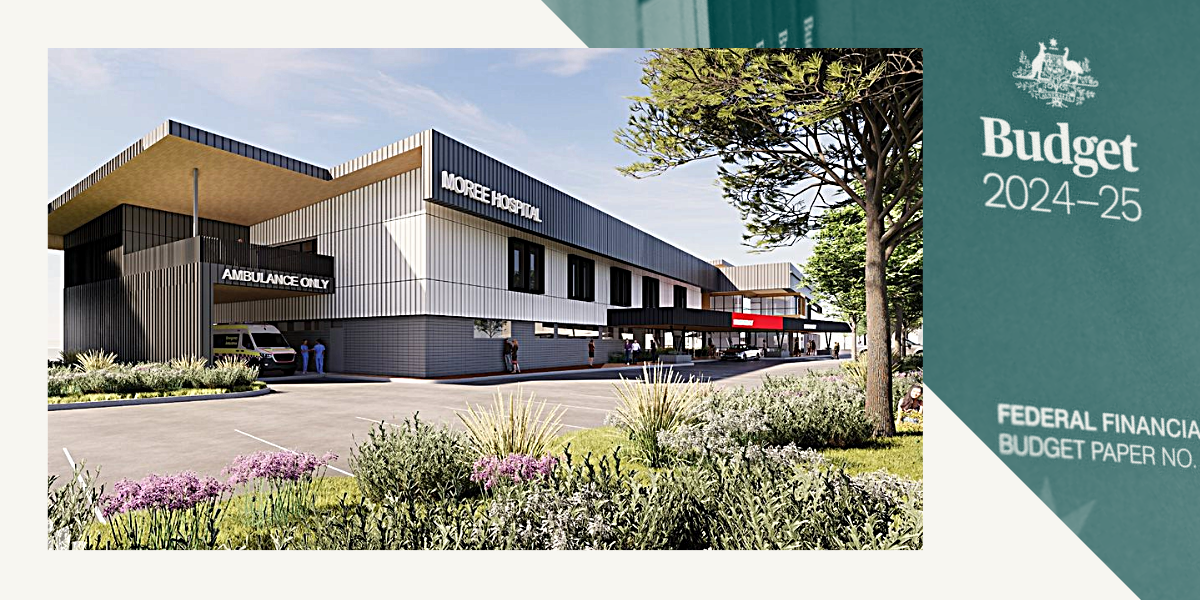Rural healthcare has received only a modest lifeline in the federal budget, despite the government’s grand vision for the future of Australia’s regions.
Regional industries are at the centre of the government’s $22.7 billion Future Made in Australia plan, which supports the development of new clean energy sectors.
Treasurer Jim Chalmers said the regions would lead the shift to net zero in the global economy’s biggest transformation since the industrial revolution.
“Australian energy can power it, Australian resources can build it, Australia’s regions can drive it, Australian researchers can shape it and Australian workers can thrive in it,” Dr Chalmers said in his budget speech on Tuesday.
The plan is backed by funding for regional and rural roads, infrastructure, aviation and connectivity.
But boosts to health were modest or continuations of previously-announced programs, a move likely to disappoint communities who say better care is at the heart of prosperity in the bush.
A $116 million rural health workforce program from last year will include a new $17.4 million package to prop up clinics in rural and remote areas.
A trial of the Single Employer Model, which gives doctors better leave and pay conditions when working across rural clinics and hospitals, will be extended until 2028.
The Royal Flying Doctor Service, which remote Australians rely on for medical care and evacuations to major centres, has received $73.8m over three years.
Last year’s measure to triple the bulk billing incentive under Medicare resulted in an estimated 202,000 extra free GP visits across the regions, the budget papers revealed.
“Quality services are essential to sustainable regional communities,” the regional portfolio budget statement said.
“Enhancing the accessibility, connectivity and equity of services … is fundamental to making regions increasingly better places to live, work and invest.”
The the National Rural Health Alliance says the Federal Budget fails to address the ongoing health care inequity between rural and urban Australia.
“The Budget falls short of our expectations. It is disheartening to observe the government’s lack of responsiveness to rural voices and its failure to commit to comprehensive reforms that would offer sustainable and long-term benefits for rural communities,” said Nicole O’Reilly, Chairperson of the National Rural Health Alliance.
“Evidence is clear that per-person spending on healthcare is not equitable. We know from the Evidence base for additional investment in rural health in Australia, that each person in rural and remote Australia is missing out on nearly $850 per year of healthcare access equating to a total annual rural health underspend of $6.5 billion.
“Funding could have enabled rural Australians to access health and medical services in their local communities. We call on the government to make a better commitment at the next opportunity to ensure that our rural communities are looked after,” said Ms O’Reilly.
The government has heeded calls to continually improve the nation’s country roads, which have been left severely damaged by floods and heatwaves, through its Roads to Recovery program.
But progress will be gradual.
Local governments have been calling for $1 billion a year to fix pothole-riddled roads, but federal funding won’t hit that target until after 2027/28.
A previously-announced increase to the Black Spot program, which improves rural mobile connectivity, will also not hit its $150m target for another three years.
The budget recognised the need for improved aviation to support growing regional industries, with $50m over three years on a grants basis to bolster safety at remote airstrips and $40m to upgrade rural airports.
Like what you’re reading? Support The New England Times by making a small donation today and help us keep delivering local news paywall-free. Donate now

